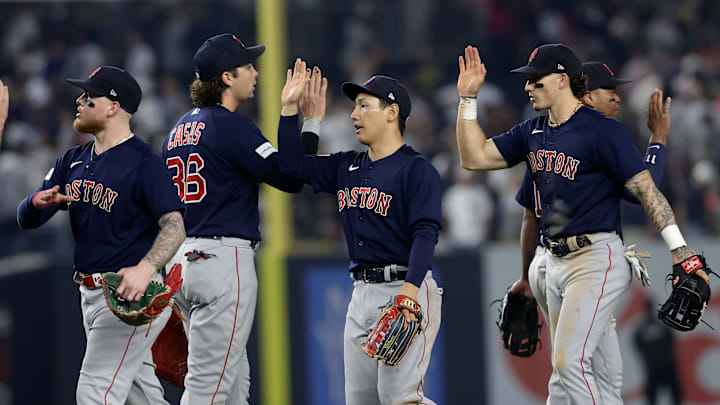The American League Rookie of the Year Award was created in 1949. In the 74 seasons since, the Red Sox have had multiple players finish in the top three only three times: Billy Klaus and Norm Zauchin in 1955, Fred Lynn and Jim Rice in 1975, and Rich Gedman and Bob Ojeda in 1981. The closest they have come since '81 is when Dustin Pedroia won the award in 2007 and Daisuke Matsuzaka came in 4th place.
This season, there is a real possibility that Triston Casas and Masataka Yoshida both finish in the top three. But which rook had the better season? Let's take a look at some of their offensive and defensive stats and determine who's got the edge.
Yoshida's .783 OPS does not come close to Casas' .856 OPS. Plus, Casas has cranked 24 homers, 9 more than Yoshida's 15. Casas' 70 walks and .367 OBP is also significantly better than Yoshida's 34 walks and .338 OBP.
Moving on to some of the more advanced metrics, the evidence continues to mount for Casas. Per FanGraphs, he has a 1.7 WAR and 129 wRC+ compared to Yoshida's 0.4 and 109. Casas also edges Yoshida out in BABIP, as his .317 BABIP is 7 points higher than Yoshida's .310.
Casas also hits the ball harder than Yoshida, with a 91.1 average exit velocity and 46.2% hard hit percentage compared to Yoshida's 89.0 and 40.9%.
Even defensively, Casas beats Yoshida in most categories. His 1.7 UZR and -4 DRS is better than Yoshida's -2.0 UZR and -6 DRS. However, Yoshida's does slightly edge out Casas in OAA, with -9 to Casas' -10.
Casas edges Yoshida in most offensive and defensive categories
After taking a look at just some of the numbers, it becomes clear that Casas has had a better rookie season than Yoshida. He gets on base at a higher clip, hits the ball harder and farther, and has better defensive numbers than Yoshida.
But, it is important to note a few areas where Yoshida beats out Casas. Yoshida's average is more than 20 points higher than Casas', he has just 75 strikeouts compared to Casas' 126, and he has driven in 68 runs — three more than Casas' 65. He also has eight stolen bases compared to Casas' none.
While a case probably can't be made for Yoshida, both players have filled different holes for this Red Sox team. If it's a tie game and there's a runner on third with two outs, fans might want Yoshida over Casas because he is more likely to put the ball in play and less likely to strikeout. But, if it's a tie game and there's no one on base, you'd take Casas in a heartbeat because of the higher likelihood that he cranks a moonshot. Both players have served a valuable purpose, just in different ways.
To the delight of Red Sox fans, Yoshida is signed through 2027 and Casas won't hit arbitration until 2027. So, despite the disappointing 2023 season, Red Sox fans should look forward to watching both of these players rake for the next 4-5 seasons. And, they should also look forward to potentially seeing two Red Sox in the top-three ROTY voting for the first time in more than 40 years.
